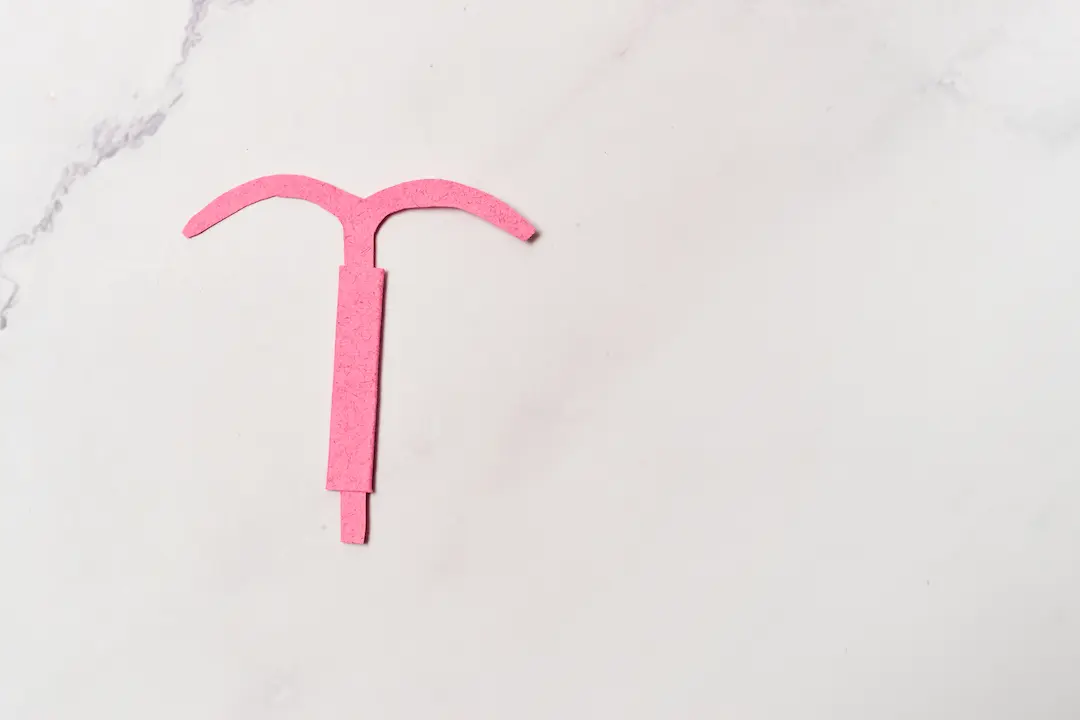
Although these are very rare cases, it can happen that a woman becomes pregnant while using an IUD. How is that possible? How can you tell? What is a pregnancy with an IUD like?
Pregnancy with an IUD: here’s everything you need to know.
Understanding how an IUD works
The IUD, or intrauterine device (IUD), is a widely used contraceptive method. There are two main types: the copper IUD and the hormonal IUD. These devices are usually inserted by a doctor or midwife during a consultation.
The IUD offers a practical alternative to other contraceptive methods like the pill or condoms: once inserted, there’s no need to think about it daily. Whether copper or hormonal, an IUD is replaced every 3 to 5 years (up to 10 years for some copper models), depending on the type.
What’s the difference between a hormonal and copper IUD?
There are clear differences between copper and hormonal IUDs, both in how they work and their effects. Specifically:
- The copper IUD primarily works by releasing copper ions, which are toxic to sperm. This prevents them from reaching the uterus and thus fertilizing an egg. Additionally, copper triggers local inflammation that disrupts implantation of a fertilized egg, making pregnancy even less likely.
- The hormonal IUD (also called LNG-IUS) releases a progestin, a hormone similar to progesterone. This hormonal release thickens cervical mucus, making it more difficult for sperm to enter the uterus. It also thins the uterine lining, reducing the likelihood of implantation, and can partially suppress ovulation and periods.
Choosing a copper IUD over a hormonal one (or vice versa) is a personal decision, but it can also be influenced by medical factors. For instance, if someone is sensitive to hormonal contraception, the copper IUD (or another suitable method) may be preferred.

Chance of pregnancy with an IUD: the Pearl Index
Even today, no contraceptive method is 100% effective. So, although rare, there is still a chance of pregnancy with an IUD.
To measure contraceptive effectiveness, we often use the Pearl Index. This index calculates how many pregnancies occur among 100 women using a contraceptive method for one year, based on two criteria: perfect use (theoretical index) and typical use, which includes real-life factors like forgetfulness or improper insertion (practical index).
- The copper IUD: has a theoretical Pearl Index of 0.6% and a practical index of 0.8%. In other words, it is 99.4% effective in theory and 99.2% in practice.
- The hormonal IUD: has both a theoretical and practical Pearl Index of 0.2%, meaning it is 99.8% effective.
Unlike the pill, it is impossible to forget your IUD, so why is there still a difference between theoretical and practical effectiveness? Several factors can reduce its effectiveness, such as improper placement or device displacement over time. That’s why it’s recommended to see your gynecologist regularly (at least once a year) to check your IUD.
Want to learn more? Feel free to download the May app, where you’ll find plenty of resources to support and guide you throughout your pregnancy.

Signs and symptoms of pregnancy with an IUD
Even though IUDs are among the most effective contraceptive methods according to the Pearl Index, they are not infallible. So while rare, a pregnancy with an IUD can occur. The early signs are exactly the same as with a typical pregnancy (nausea, fatigue, changes in your menstrual cycle…).
Keep in mind that if you have a hormonal IUD, missed periods can be hard to detect (or even impossible) since this type of IUD often stops menstruation.
In any case, if you have doubts, take a pregnancy test, and if needed, confirm it with your healthcare provider via a blood test.

Risks associated with pregnancy while using an IUD
A pregnancy with an IUD involves certain risks. One of the most serious is the risk of ectopic pregnancy.
While an IUD effectively protects against intrauterine pregnancies, it does not prevent ectopic pregnancies. These occur when a fertilized egg implants outside the uterus (usually in a fallopian tube) and can cause serious complications if not treated quickly. That’s why we recommend consulting your healthcare provider at the slightest suspicion of pregnancy.
Additionally, being pregnant with an IUD can increase the risk of infection. Hormonal IUDs can alter the hormonal environment of the uterus, and copper IUDs, because of their physical presence, can in rare cases be linked to intrauterine infections during pregnancy, such as chorioamnionitis. This infection can have serious consequences, such as premature membrane rupture, preterm birth, or even miscarriage.

What to do if you’re pregnant with an IUD
If your pregnancy test is positive while using an IUD, see your gynecologist quickly to assess the situation and remove the IUD if possible to reduce the risk of complications (this is only possible before 14 weeks and if the strings are visible). If removal isn’t possible, your pregnancy will need close monitoring so that any complications can be addressed promptly. Don’t hesitate to ask all your questions during your consultations.
Although pregnancy with an IUD is a rare event, it can happen because no contraceptive is 100% foolproof. This type of pregnancy is exposed to more complications than others. To manage this, your healthcare provider will monitor you more closely.

**
Photos: metod_ma | FabianMontano | Rawpixel | jm_video | s_kawee | elsavva99
This text was translated from French by an artificial intelligence. The information, advice, and sources it contains comply with French standards and may therefore not apply to your situation. Make sure to complement this reading by visiting the May US/UK app and consulting the healthcare professionals who are supporting you.




